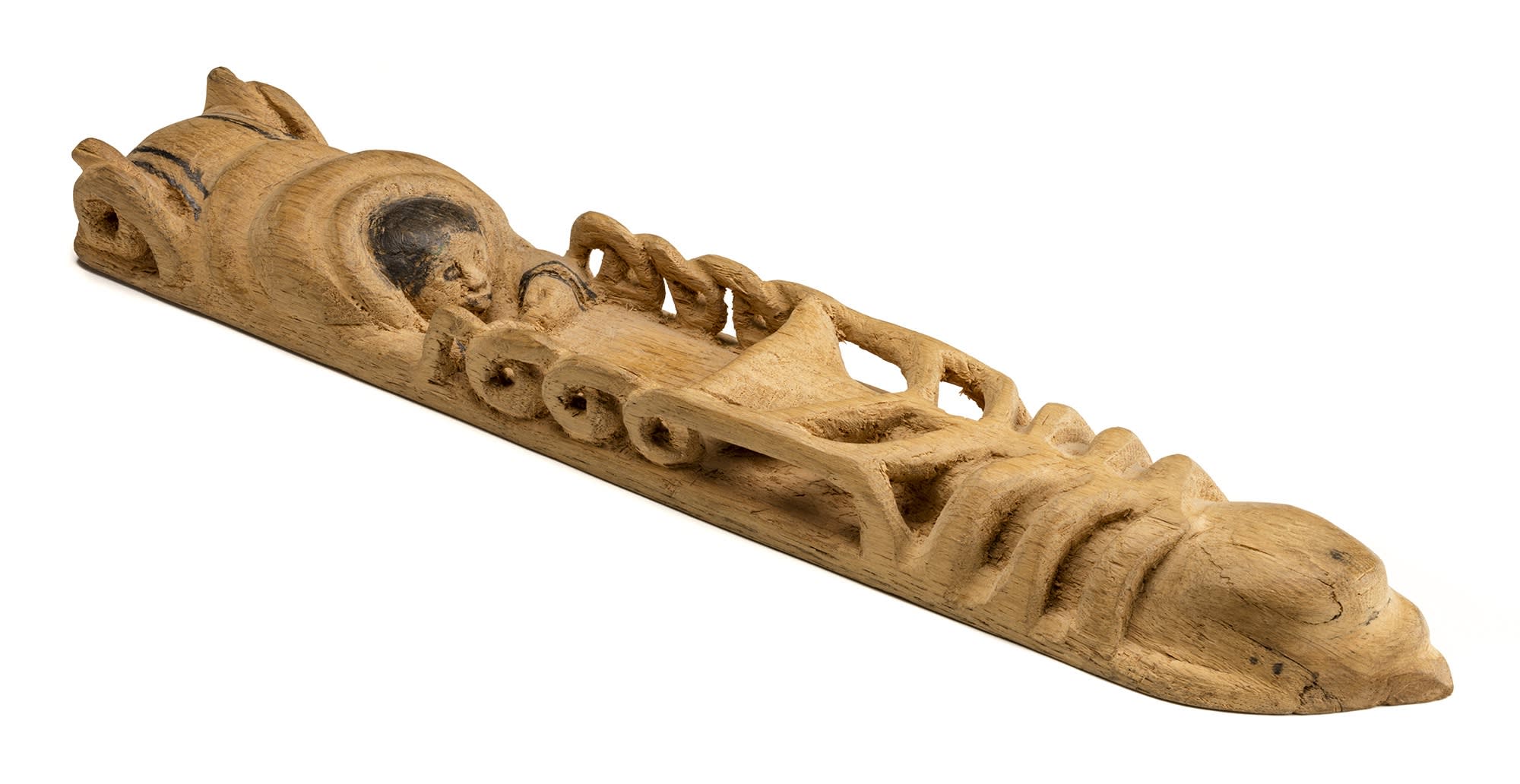Lot 50
DAVIDIALUK ALASUA AMITTU (1910-1976) m., PUVIRNITUQ (POVUNGNITUK)
Scene from the Legend of Lumaaq, early 1970s
wood and graphite, 1.5 x 15.75 x 2.75 in (3.8 x 40 x 7 cm)
signed, "ᑎᕕᑎ ᐊᒥᑐ"; inscribed indistinctly in syllabics ([?]ᒪᑐ?).
ESTIMATE: $2,500 — $3,500
PRICE REALIZED: $2,880
Provenance
Ex. Collection Lorne Balshine, Vancouver;
Walker's Auctions, Ottawa, Nov. 2014, Lot 333;
Acquired from the above by a Montreal Collection.
Published
Marybelle Myers ed., Davidialuk 1977, (Quebec: La Fédération des Coopératives du Nouveau-Québec, 1977), unpaginated.
The use of wood was frowned upon from the earliest days of the "Eskimo art experiment"; James Houston discouraged it in his infamous instructional manual of 1951: "The Eskimo should be encouraged to use only the materials native to his land, such as ivory, stone, bone, skins, grass, copper, etc. The introduction of wood, cloth, and metals into his art destroys the true Eskimo quality and places him in competition with craftsmen elsewhere who have a complete mastery of the materials" [1].
Even some twenty years later, Davidialuk's use of wood would have been considered daring (and more likely to have been attempted by his cousin Joe Talirunili). This fascinating and rare work illustrates the dramatic conclusion to the story of the blind boy and the loon: having regained his sight, the boy exacts his revenge upon his cruel mother; she is dragged out to sea by a large whale that he has just harpooned.
1. James Houston, Sanajasak: Eskimo Handicrafts (Montreal/Ottawa: Canadian Handicrafts Guild and Department of Resources and Development, 1951), p. 1.
Reference: For a similar composition in stone by an unidentified Puvirnituq artist c. 1958-59, see George Swinton, Sculpture of the Inuit Toronto, M&S, 1972/92), fig. 355.

